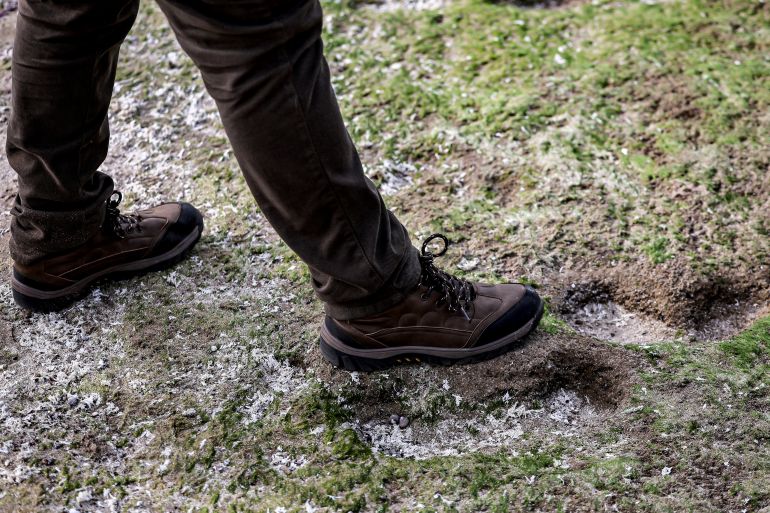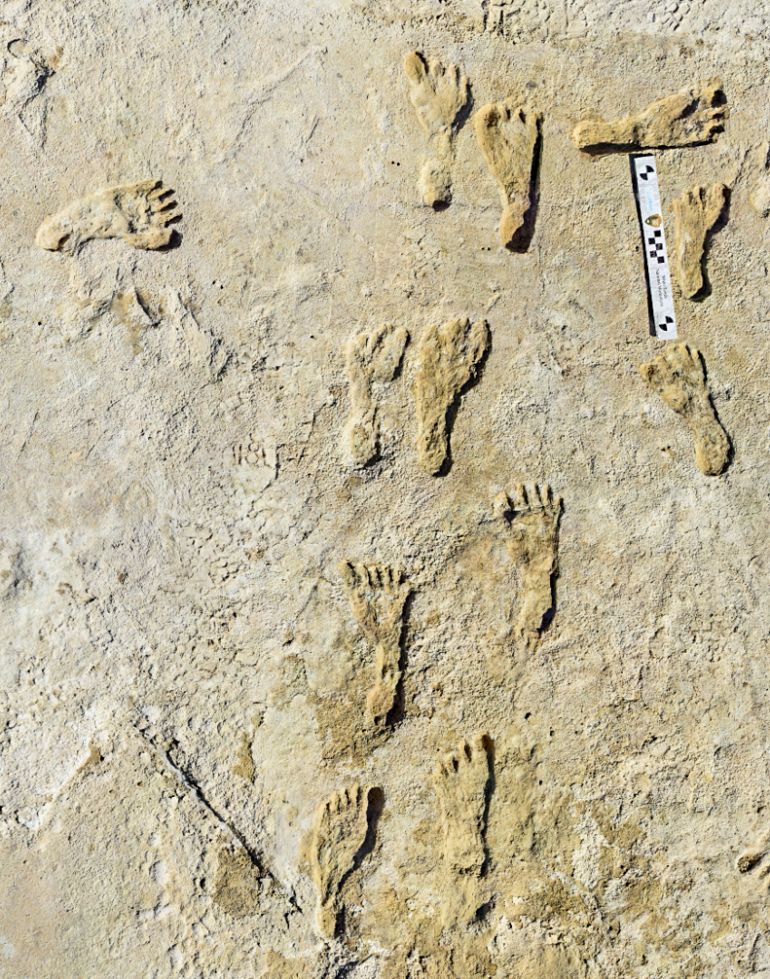Indentations in the ground from ages ago offer invaluable insights into the lives of our early ancestors, shedding light on their behaviors, movements, and even cultural practices. Recently, in January, an international team of scientists from Morocco, France, Germany, and Spain unveiled a remarkable discovery: a collection of remarkably well-preserved human footprints estimated to be 100,000 years old. These footprints, believed to belong to a group of five individuals, were uncovered on a rocky beach in a northern Moroccan town.
Published in the prestigious science journal Nature, this research represents a significant contribution to unraveling the elusive origins of the human race. However, the existence of these ancient tracks is under threat due to coastal erosion.
Here’s a closer look at this groundbreaking find and other notable discoveries of ancient human traces:

Discovery in Morocco:
In June 2022, during field research led by archaeologist Mouncef Sedrati, the team stumbled upon these indentations near the Moroccan shoreline, close to the city of Larache. Initially uncertain, further investigation revealed footprints of various sizes embedded in the sediment of a sandy beach, dating back to around 100,000 years ago.
In total, around 85 footprints were identified, offering tantalizing clues about the group’s composition and activities. The distinctive arches, rounded heels, and toe marks indicated they were made by Homo sapiens, or modern humans, including adults and children.
Despite this significant discovery, questions remain regarding the group’s purpose in that location—whether they were foraging for food or simply traversing the area.
Preservation and Analysis:
The footprints’ remarkable preservation can be attributed to a combination of factors, including their location, soil composition, and the action of sea waves. Through meticulous analysis using techniques like optically stimulated luminescence dating and 3D modeling, researchers were able to estimate the age of the footprints and glean insights into the individuals who made them.

Other Ancient Human Tracks:
While rare, discoveries of ancient human tracks have been made elsewhere. The oldest known footprints, dubbed “Eve’s footprints,” were found in South Africa in 1995, dating back approximately 117,000 years. Similarly, tracks found in New Mexico, USA, dating back 22,800 years, have provided crucial information about ancient human migrations.
Insights into Prehistoric Humans:
These ancient footprints serve as snapshots of prehistoric life, offering glimpses into early human behaviors, cultural practices, and migration patterns. They challenge previous assumptions about the timing and routes of human migration, highlighting the dynamic nature of scientific inquiry into our origins.
Threats to Preservation:
Despite their significance, many of these invaluable traces of human history are at risk due to changing environmental conditions, including coastal erosion and rising sea levels. Urgent efforts are needed to document and preserve these fragile remnants of our past for future generations.
In conclusion, the discovery of ancient human footprints in Morocco provides a fascinating window into our early ancestors’ lives, enriching our understanding of human evolution and migration. However, the imperative to protect these invaluable remnants of the past has never been more pressing.




